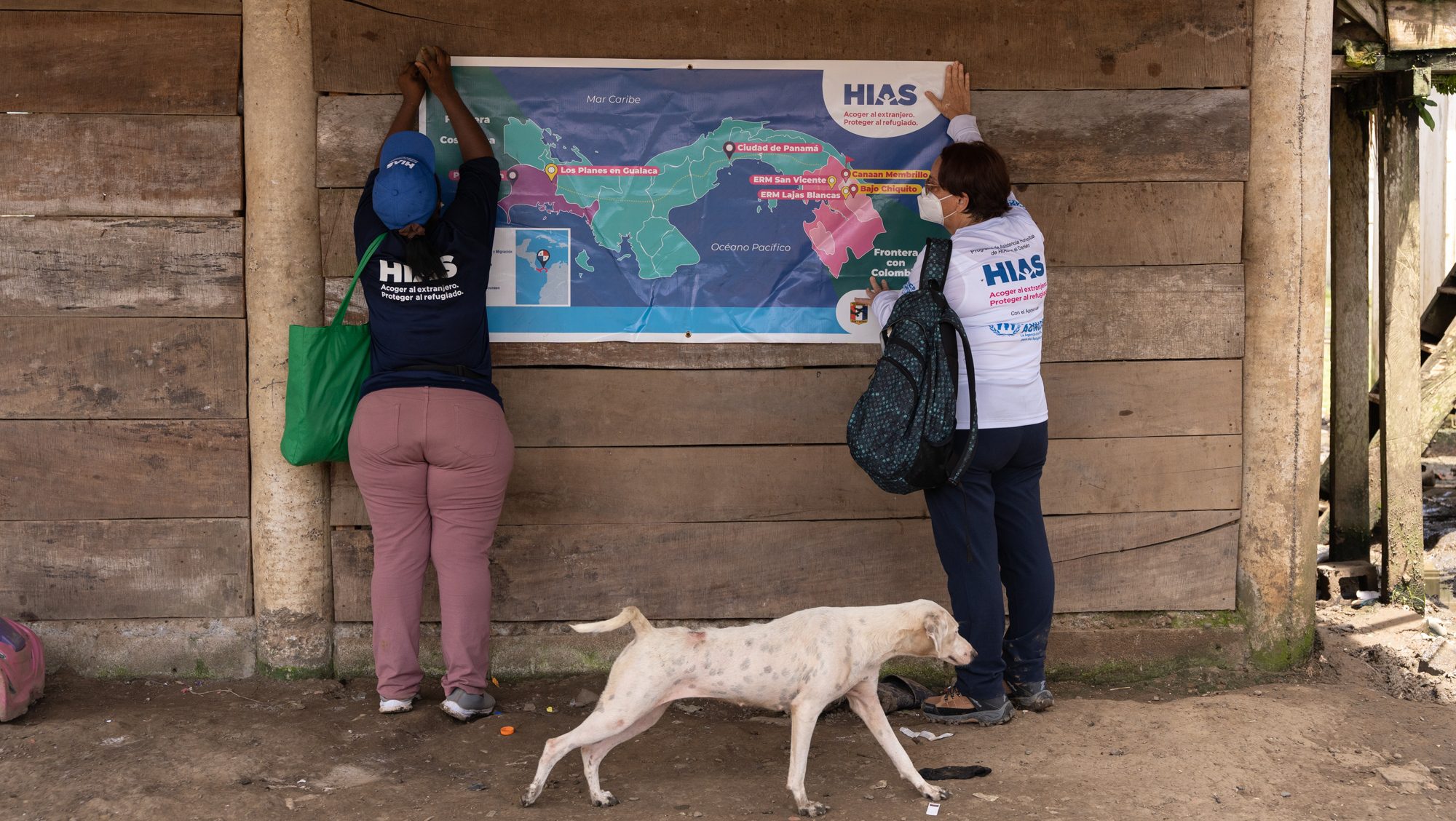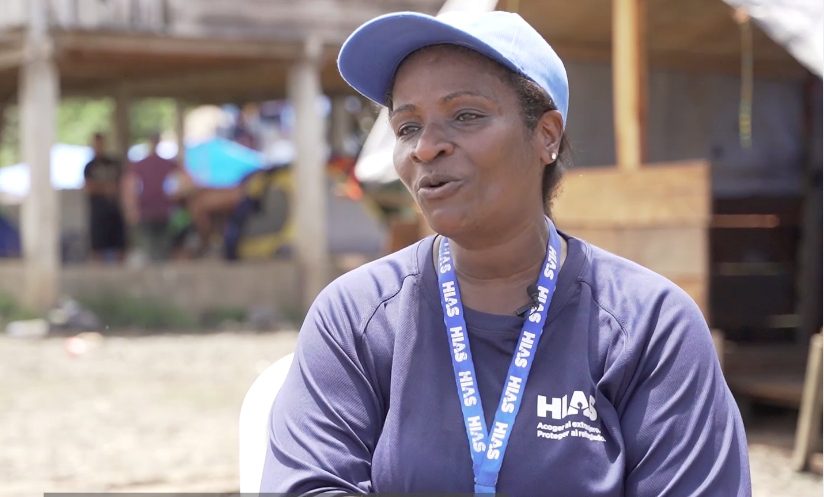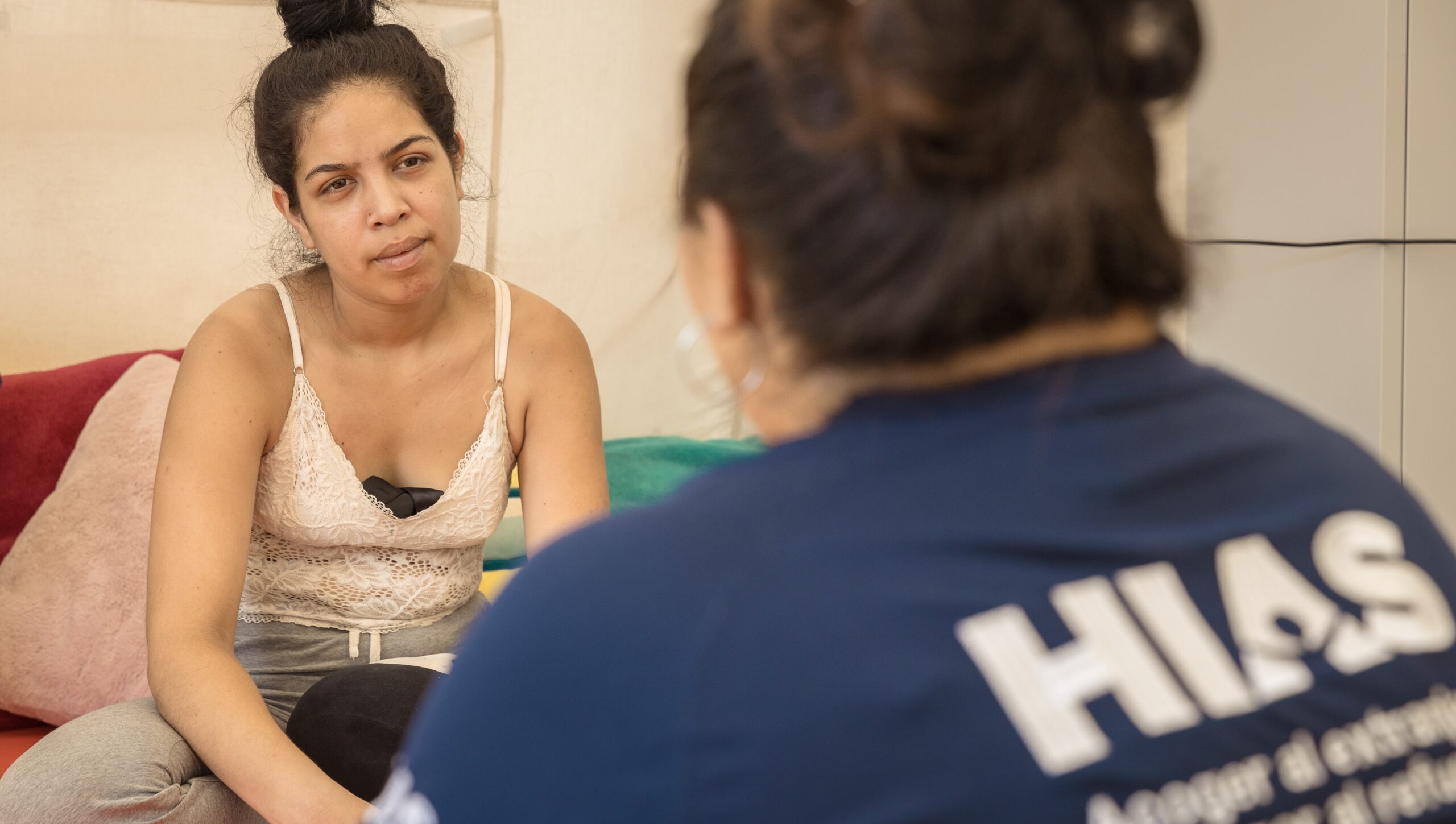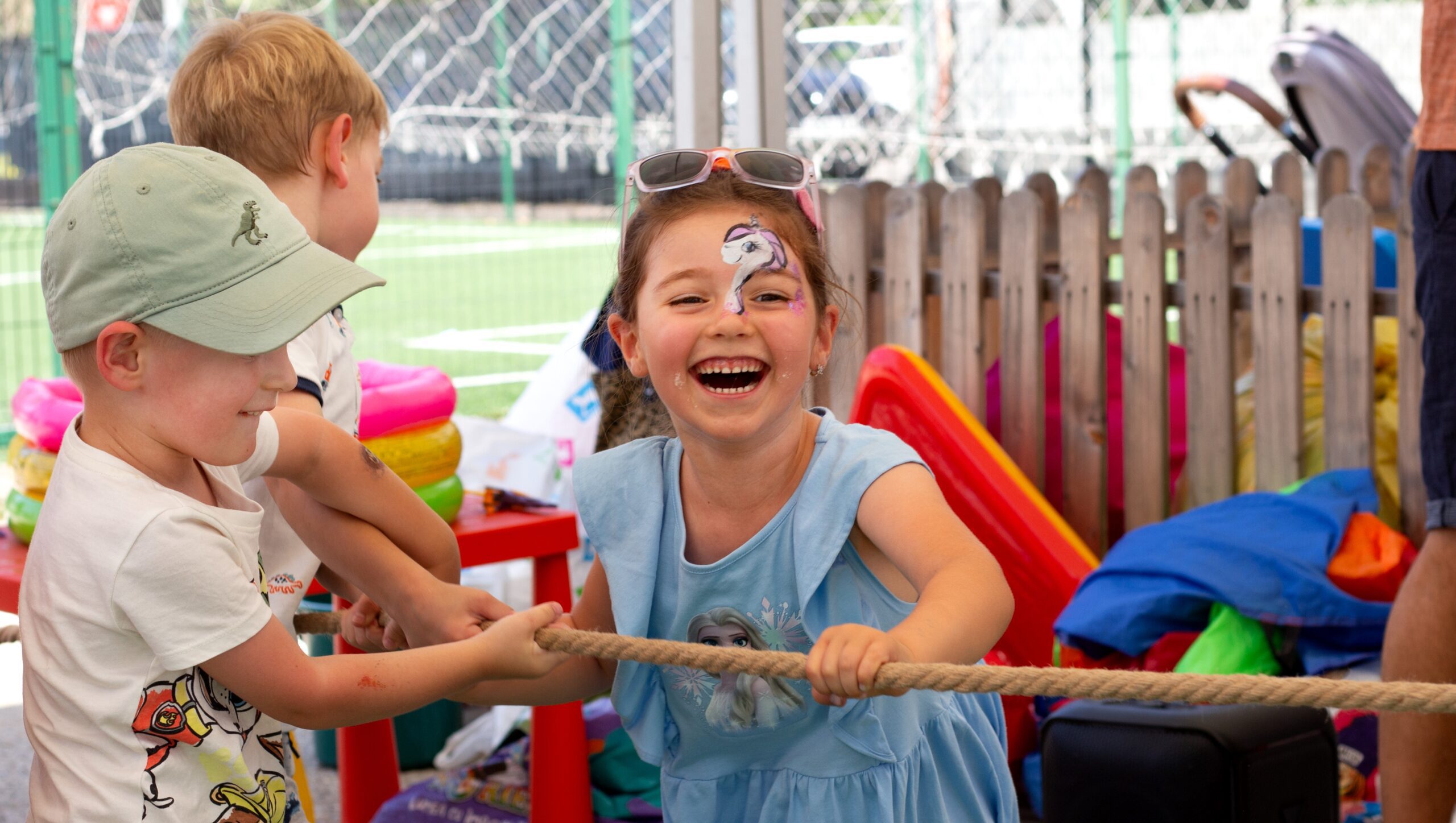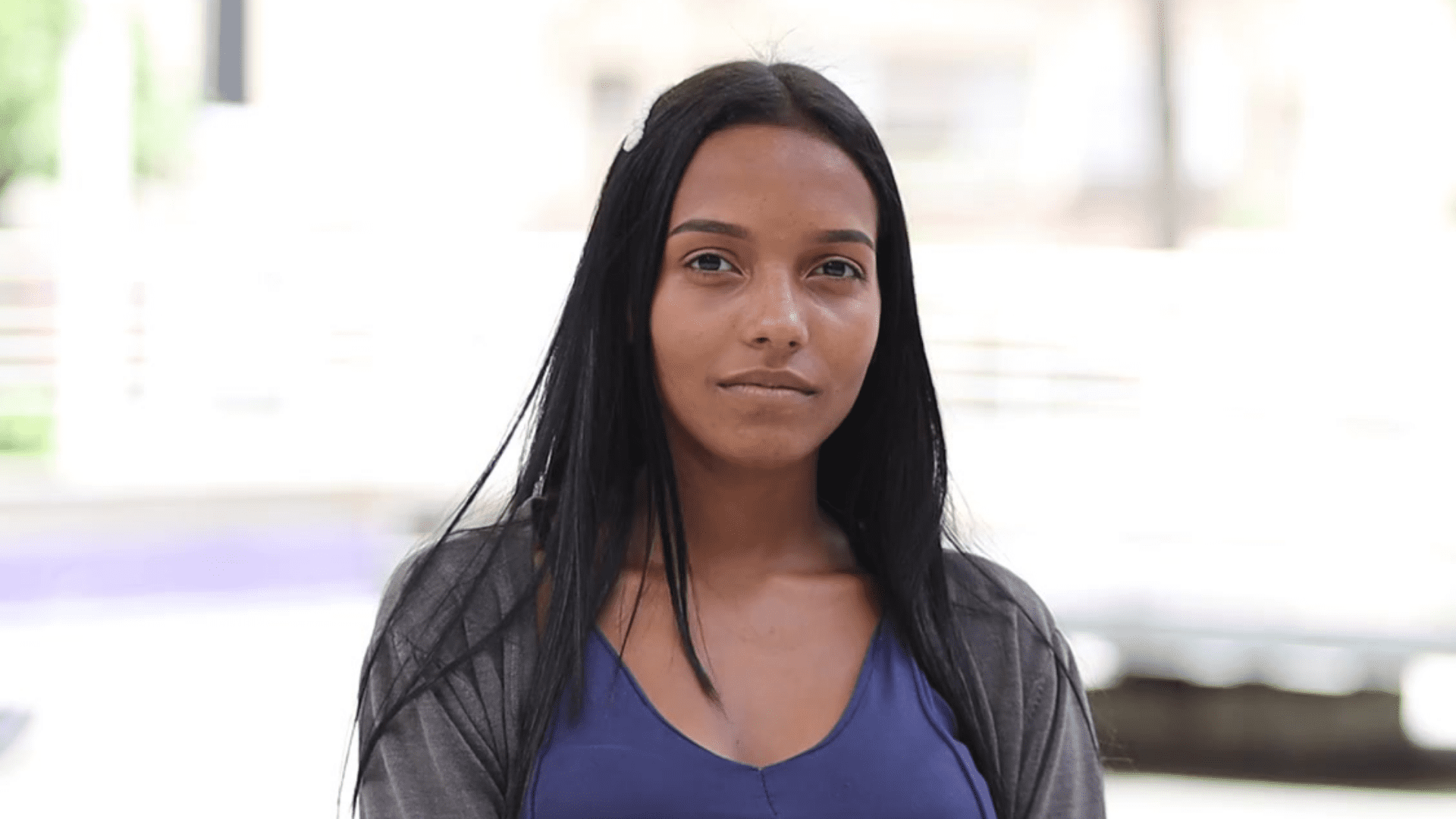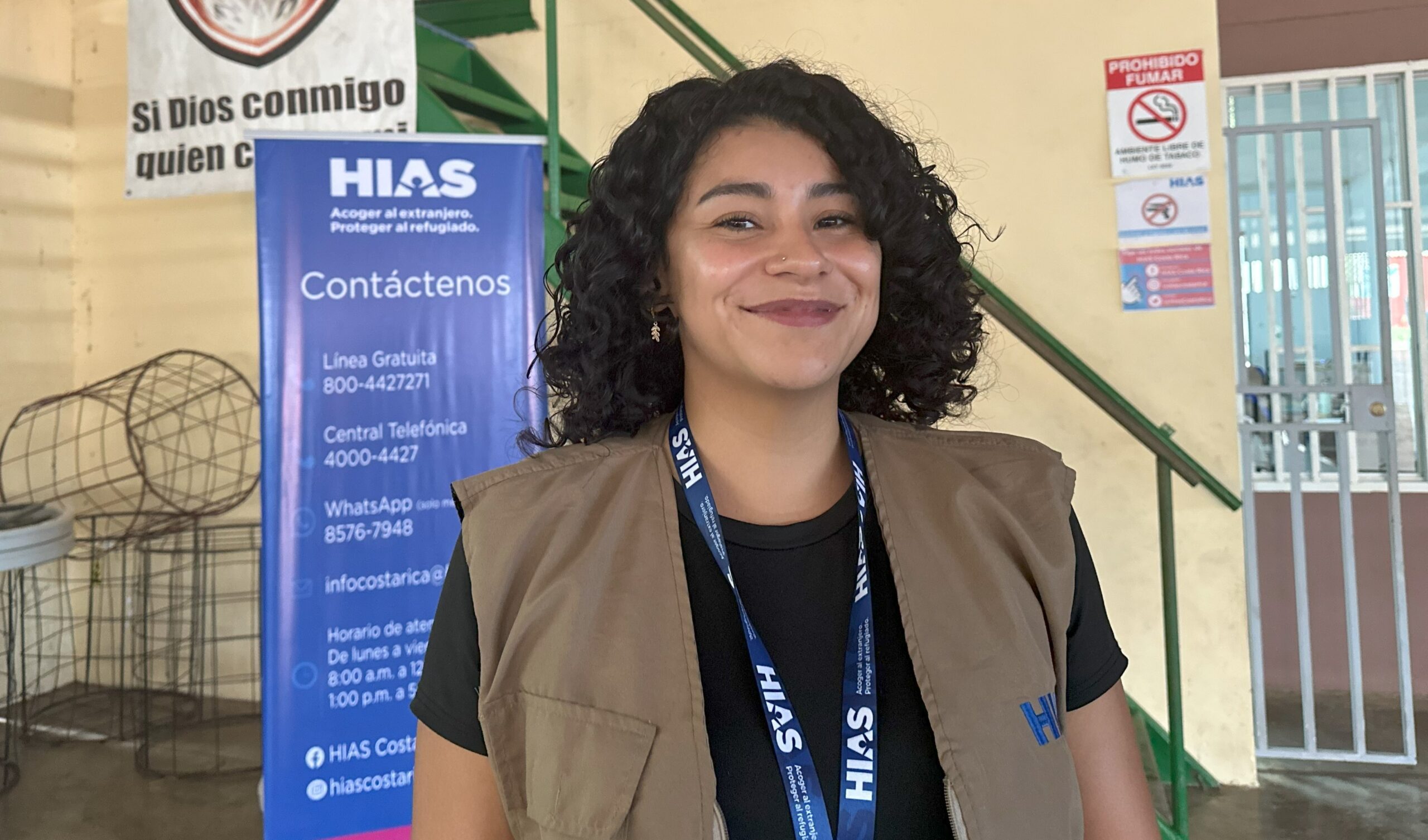In the Darién Gap, A Daughter of Migrants Gives Back
By Mar Sabé Dausà
Communications Specialist, HIAS
Nov 23, 2022
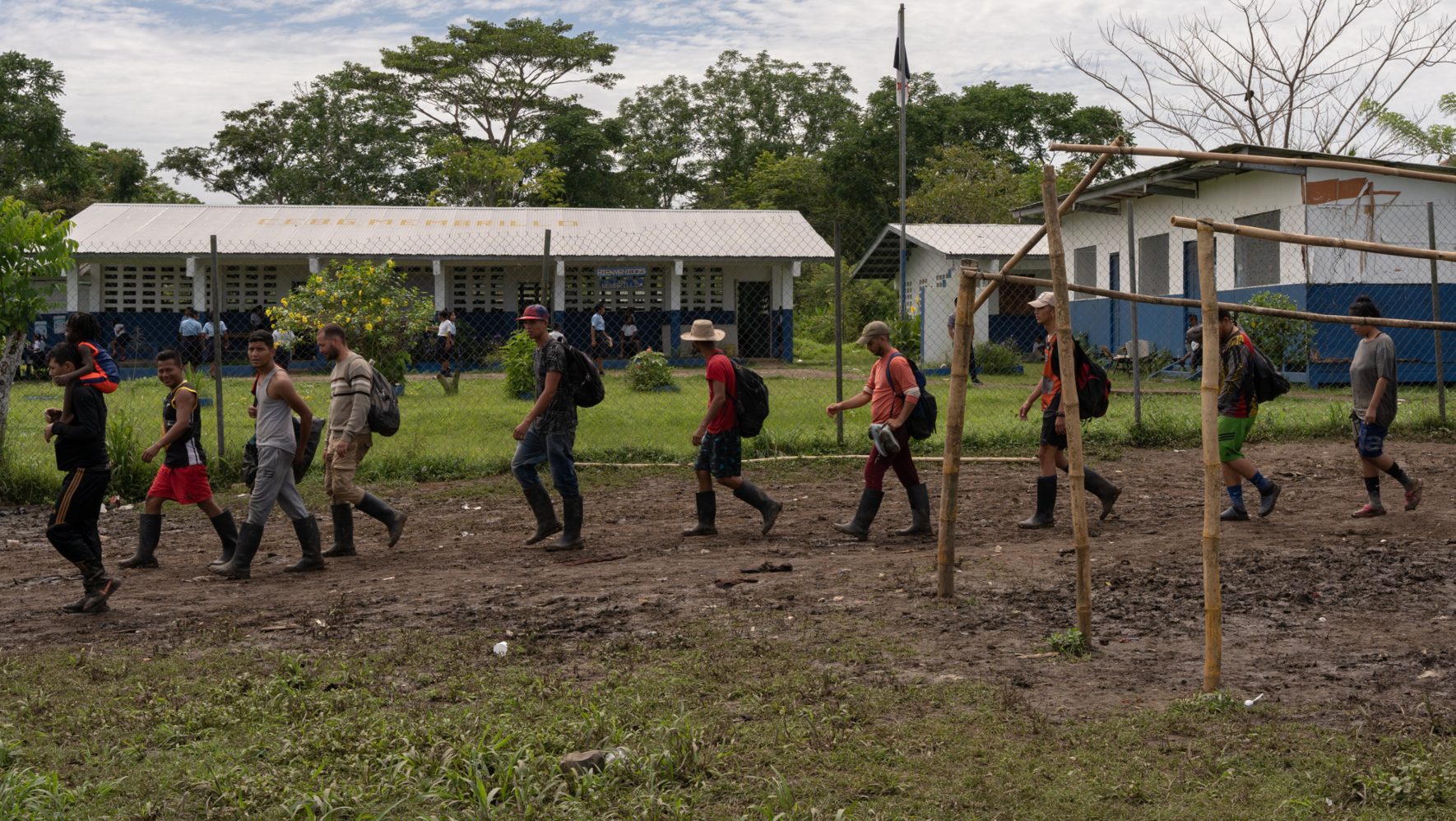
A registration line forms at Canaan Membrillo, as migrants traverse the town while crossing the perilous Darién Gap on August 23, 2022. (Tova Katzman for HIAS)
Benilda Murillo, 51, has worked for HIAS since June 2021. She spends three nights a week in the indigenous community of Canaán Membrillo, where she responds to the basic needs of the thousands of people who arrive every day by foot, across one of the most dangerous borders in the world: the Darién Gap, the jungle that separates Colombia from Panama.
Benilda is no stranger to the Darién Gap. She crossed this same jungle when she was a fetus in the belly of her mother, a Colombian migrant, and she grew up at the head of a river in the Darién region. She obtained a degree in Community Development from the University of Darién at age 40, after years of experience in working with communities in the area, and now promotes HIAS projects in the province. With HIAS, Benilda’s job is to guide refugees and migrants along the journey, placing particular attention on women who, in many cases, have suffered gender-based violence.
According to Panamanian authorities, from January to October 2022 around 211,355 people passed through the Darién jungle. Many came from Venezuela, Cuba, and Haiti, but some traveled from as far away as Bangladesh, Pakistan, and Ghana. HIAS was the first organization to operate in the community of Canaán Membrillo, which has 300 inhabitants, and was the only one operating at the time of this interview.
“As a ‘Dariénita’ I love being here,” Benilda says, adding that as “the daughter of Colombian migrants, I can identify with those I meet.”


